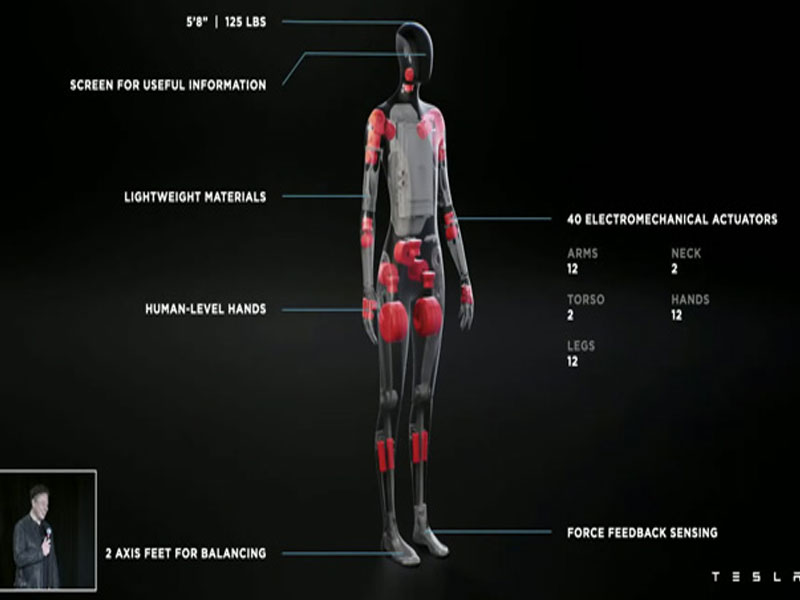Mahindra Lifespaces unveils India’s first home buying experience on the Metaverse
SOURCE: HTTPS://INDIATECHNOLOGYNEWS.IN/
OCT 31, 2023
Should retail robots go humanoid?
SOURCE: RETAILWIRE.COM
SEP 01, 2021

If some big names in the robotics world have their way, the robots we see working at retail may some day more closely resemble a human shelf-stocker, or even a Terminator, than the boxy robots currently rolling on sidewalks and in warehouses.
Tesla CEO Elon Musk announced that the electric car manufacturer plans to build a humanoid robot that is 5’ 8” tall, weighs 125 pounds, can carry 45 pounds and lift 150 pounds off the ground, Popular Science reported. In a presentation widely shared online, Musk suggested that bipedal, humanoid robots represent the next obvious evolution in the technology at work in autonomous vehicles.
The potential retail applications for humanoid robots are numerous. Robots could lift bulky products off of shelves and carry them to a destination and perform tasks that require a human-level degree of dexterity but are too dangerous for humans to safely complete.
While the concept of robots carrying our grocery bags in their arms and walking them up the stairs for us may sound like science fiction, major developers in the robotics space have already taken strides in creating autonomous machines that move like people and animals instead of vehicles.
A recent video from Boston Dynamics demonstrating running and jumping robots on a parkour course demonstrates the degree to which this level of mobility has become possible, at least on the prototype level.
Robots capable of human-like or animal-like movement being used at retail or for delivery do, however, raise real questions about safety.
Wheeled sidewalk delivery robots have already experienced a great deal of back-and-forth from state and local governments trying to balance a desire for services with concerns over the potential risks for pedestrians.
Whether or not a robot the likes of which Musk and Co. are planning would prove to be a greater or lesser safety hazard than a wheeled vehicle depends on its physical capabilities, and how and where it would be used.
Anxieties over Boston Dynamics’ style of robots have already made their way into science fiction. A 2017 episode of the series Black Mirror depicts a robotic dog based on their designs.
LATEST NEWS
Augmented Reality
Hi-tech smart glasses connecting rural and remote aged care residents to clinicians
NOV 20, 2023
WHAT'S TRENDING


Data Science
5 Imaginative Data Science Projects That Can Make Your Portfolio Stand Out
OCT 05, 2022

SOURCE: HTTPS://INDIATECHNOLOGYNEWS.IN/
OCT 31, 2023
SOURCE: HTTPS://FINANCE.YAHOO.COM/
SEP 28, 2023
SOURCE: HTTPS://MEDIABRIEF.COM/
SEP 22, 2023
SOURCE: HTTPS://WWW.BUSINESS-STANDARD.COM/INDIA-NEWS/METAVERSE-WEB3-MARKET-TO-GROW-40-ANNUALLY-TO-REACH-200-BN-BY-2035-123060200394_1.HTML
JUN 28, 2023
SOURCE: HTTPS://WWW.WIRED.COM/STORY/WHAT-IS-THE-METAVERSE/
JUN 20, 2023